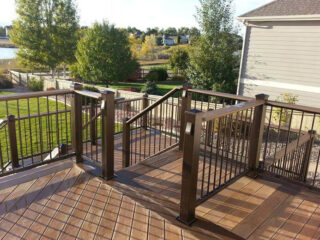
Choosing the right small chop saw can save time and improve the quality of home projects. Size, power, and cutting ability all matter, but so does how simple the tool is to handle. Before buying, focus on ease of use, material compatibility, and precision to make sure the saw fits the type of work needed.
Some models, like an easy to use small chop saw, combine portability with strong cutting performance, making them practical for wood, plastic, or light metal. A compact design also helps save space in a workshop while still providing accurate cuts. These features matter most for hobby projects or small repairs where control and accuracy are more important than raw power.
Price and durability also play a role. A tool that balances cost with consistent performance often gives better long-term value. By weighing these factors, anyone can confidently choose a saw that supports both simple DIY tasks and more detailed work.
Key Takeaways
- Focus on ease of use, accuracy, and material compatibility
- Compact saws balance portability with strong performance
- Value depends on both cost and long-term durability
Essential Factors When Choosing a Small Chop Saw for Home Projects
A small chop saw should match the type of material, the size of cuts, and the level of accuracy the project demands. Attention to blade size, safety features, and the saw’s ability to handle different tasks makes the difference between smooth results and wasted effort.
Material Compatibility and Intended Use
Different saws handle different materials. Some are designed mainly for wood, while others cut through plastic, aluminum, or even light steel. Buyers should confirm that the saw supports the type of projects they plan to complete.
For example, a hobbyist working with balsa wood or trim pieces needs a lighter tool than someone cutting small steel rods. Using the wrong saw can damage both the blade and the material.
A compact model like a mini miter saw works well for crafts, model making, or light DIY tasks. However, heavier projects may require a saw with more power and specialized blades. Matching the saw to the intended use avoids frustration and improves results.
Cutting Capacity and Blade Size
Cutting capacity determines the maximum thickness and width the saw can handle. A small chop saw usually has a blade between 2 and 7 inches, which limits the size of material it can cut. Larger blades handle thicker stock, while smaller blades give more control for detailed work.
Buyers should measure the typical material they plan to cut before choosing blade size. A saw with a 2-inch blade may handle thin trim but will not cut through a 2×4. On the other hand, a 6-inch blade provides more flexibility but may take up more space.
Blade type also matters. Fine-tooth blades make smoother cuts in wood, while abrasive blades work better on metal. Choosing the right combination of size and type allows the saw to perform as expected.
Precision and Accuracy Features
Home projects often require clean, straight cuts. Features like adjustable fences, angle guides, and clear measurement markings help maintain accuracy. A stable base also prevents the saw from shifting during use, which can throw off the cut.
Some models include quick-adjust settings for common angles, which saves time during repeated cuts. Others offer clamps that hold the material firmly in place. These small details make the difference between a rough cut and a professional-looking finish.
Laser guides or LED lights can also improve visibility, though these are not always necessary. What matters most is that the saw allows consistent, repeatable cuts without constant manual adjustments.
Safety Considerations
Safety should guide every purchase decision. Small chop saws spin at high speeds, and even compact models can cause injury. A proper blade guard is essential, as it covers the blade until it makes contact with the material.
A safety switch or trigger lock prevents accidental starts, which is especially important in a busy home workshop. Non-slip feet or mounting options keep the saw stable during use, reducing the chance of kickback.
Personal safety equipment also matters. Users should wear eye protection, hearing protection, and avoid loose clothing. A saw that balances performance with safety features provides a better long-term investment for home projects.
Evaluating Performance, Portability, and Value
A small chop saw must balance power, ease of handling, durability, and cost. Buyers benefit from comparing motor strength, weight, material quality, and warranty coverage before making a decision.
Motor Power and Speed
The motor defines how efficiently a chop saw cuts through wood, plastic, or metal. A higher amp rating usually means the saw can handle tougher materials without stalling. For small home projects, a motor in the 10–15 amp range provides enough strength without drawing too much power.
Speed also matters. Most small chop saws operate at several thousand RPMs, which produces smoother cuts and reduces the chance of blade binding. However, excessive speed without enough torque may cause problems with harder materials.
It is best to match the saw’s motor and speed to the type of tasks expected. For example, light wood trim requires less power, while cutting small steel pipes demands a stronger motor. Buyers should check both specifications together rather than focusing on one number.
Portability and Storage
Size and weight affect how easy a chop saw is to move and store. A compact frame benefits those who work in small workshops or carry tools between locations. Many small chop saws weigh under 25 pounds, which makes them easier to lift and reposition.
Handles or built-in grips add convenience during transport. A foldable base or smaller footprint also helps the saw fit on shelves or in cabinets. These features matter most for people with limited space or who do not want a permanent setup in the garage.
Although portability is useful, it should not compromise stability. A saw that shifts during use creates uneven cuts and safety risks. Therefore, buyers should look for a balance between light weight and a sturdy base.
Build Quality and Durability
The materials used in a chop saw affect how long it lasts. Steel and aluminum parts usually hold up better than plastic under repeated use. A solid base prevents wobbling, while a rigid arm reduces vibration during cuts.
Durability also depends on blade guards, switches, and hinges. Weak components wear out quickly, which leads to poor performance and higher maintenance costs. Buyers should inspect how well these parts are assembled and whether they feel secure.
For those who plan to use the saw often, investing in stronger construction saves money over time. Occasional users may not need the same level of durability but still benefit from a well-built frame.
Price and Warranty
Price varies based on features, motor size, and build quality. Entry-level models cost less but may lack advanced adjustments or long-lasting parts. Mid-range saws often strike a balance between affordability and performance, making them a good fit for most home projects.
A warranty adds value by covering defects or early failures. Basic coverage lasts one year, while some models extend protection for several years. Longer warranties usually signal confidence in the product’s durability.
Shoppers should compare cost with what is included. A slightly higher price often pays off if the saw comes with better materials, stronger power, or longer warranty support.
Conclusion
A small chop saw can be a practical tool for home projects, but the right choice depends on the type of materials and the level of precision needed. Size, power, and safety features should guide the decision.
Buyers should also weigh factors such as ease of use, workspace limitations, and budget. A compact saw may save space, but it must still deliver accurate cuts for wood, metal, or plastic.
Therefore, anyone interested in these tools should compare features carefully and match the saw to the specific tasks at hand. This approach helps avoid wasted money and supports better results on projects.







